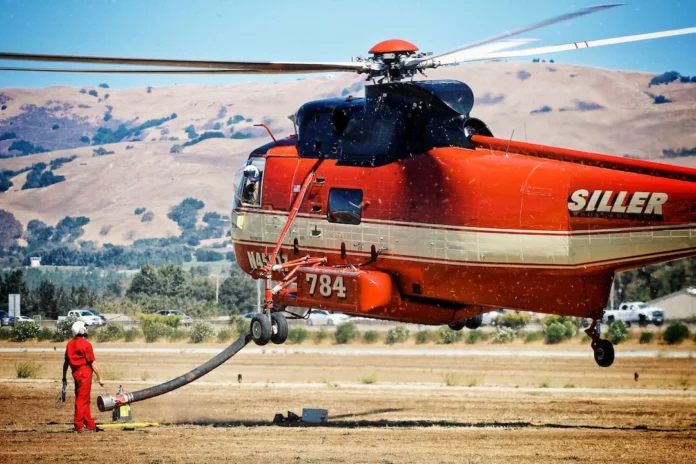Minimum Obstacle Clearance Altitude (MOCA) is a crucial term in aviation that refers to the minimum altitude specified in navigation charts for an aircraft to safely clear all obstacles within a certain radius of a specific route or segment. It is an essential reference point for pilots to maintain an adequate margin of safety during their flight operations, particularly in areas where terrain or man-made structures pose potential hazards.
In essence, MOCA serves as a minimum altitude guaranteeing obstacle clearance while enabling aircraft to remain within acceptable navigational accuracy when following a specific route. This ensures that pilots have enough room to safely maneuver and avoid potential collisions with terrain features or other obstacles that might impede their flight progress. Proper adherence to MOCA guidelines is crucial in maintaining flight safety and ensuring efficient air traffic management.
The Role of Minimum Obstacle Clearance Altitude
MOCA plays a vital role in aviation by addressing the safety concerns associated with terrain and obstacle avoidance. In mountainous regions or areas with challenging topography, it is essential for pilots to have a clear understanding of the potential obstacles they may encounter during their flight. MOCA provides valuable information to help pilots plan their route and maintain a safe altitude that guarantees clearance from these hazards.
Furthermore, MOCA acts as a valuable reference point for air traffic controllers when managing aircraft movements within a specific airspace. It allows controllers to assign altitudes to aircraft and ensure separation between different flights, minimizing the risk of conflicts and maintaining a smooth flow of air traffic. By adhering to MOCA guidelines, pilots and air traffic controllers work together to ensure the highest level of safety and efficiency in flight operations.
Understanding MOCA Guidelines
To fully comprehend MOCA guidelines, it is important to understand how they are established and depicted on aviation charts. MOCA values are determined based on a variety of factors, including terrain elevation, obstacles in the vicinity, and navigational aids available for aircraft guidance.
When depicted on a sectional chart, MOCA values are generally shown as an altitude figure above mean sea level (AMSL) and are specified for specific segments or routes. These routes are often defined using VOR (VHF Omnidirectional Range) or NDB (Non-Directional Beacon) navigation aids. Pilots are required to fly at or above the MOCA altitude while navigating along these segments to guarantee obstacle clearance.
It is important to note that MOCA values are based on non-mountainous terrain and are established to ensure that obstacles within a certain radius from the route are cleared. In mountainous areas, there are additional minimum altitudes referred to as Minimum Obstacle Clearance Altitude in Mountainous Terrain (MOCAMT) or Minimum Off-Route Altitude (MORA), which take into account the increased terrain complexity.
To determine the appropriate MOCA for a specific route, the FAA (Federal Aviation Administration) conducts extensive surveys and assesses the existing obstacles in the area. These surveys take into account factors such as the height and location of mountains, high buildings, towers, and other potential obstacles that may affect flight safety. The data collected from these surveys is then used to calculate MOCA values and depict them on aviation charts for pilots’ reference.
Ensuring Safety through MOCA Compliance
Compliance with MOCA guidelines is vital to ensure flight safety and prevent potential accidents. Pilots must remain diligent in maintaining or exceeding the specified MOCA altitudes while flying along designated routes. Deviation from MOCA altitudes may result in increased risk of collision with terrain or obstacles, compromising the safety of the aircraft and its occupants.
Additionally, air traffic controllers play a crucial role in enforcing MOCA compliance by assigning altitudes to aircraft and providing them with necessary information regarding any obstacles along their route. By working together, pilots and controllers ensure that aircraft remain at or above the MOCA altitudes, minimizing the chances of accidents and maintaining a safe and efficient flow of air traffic.
It is also important to note that MOCA values may vary depending on the instrument approach being conducted at an airport. When pilots are following instrument approach procedures, they must adhere to the published minimum altitudes specified for each approach segment. These minimum altitudes ensure safe obstacle clearance during approach and landing.
In conclusion, Minimum Obstacle Clearance Altitude (MOCA) is a critical component of aviation safety, providing pilots with a reference point for maintaining obstacle clearance. By adhering to MOCA guidelines, pilots and air traffic controllers work together to ensure the highest level of safety and efficiency in flight operations. Understanding and complying with MOCA values is essential for maintaining safe airspace and preventing potential accidents.
For More: What is MEA in Aviation? (Minimum En-Route Altitude)




